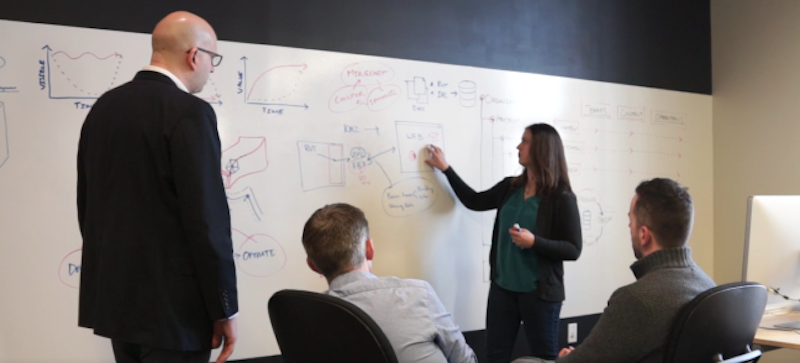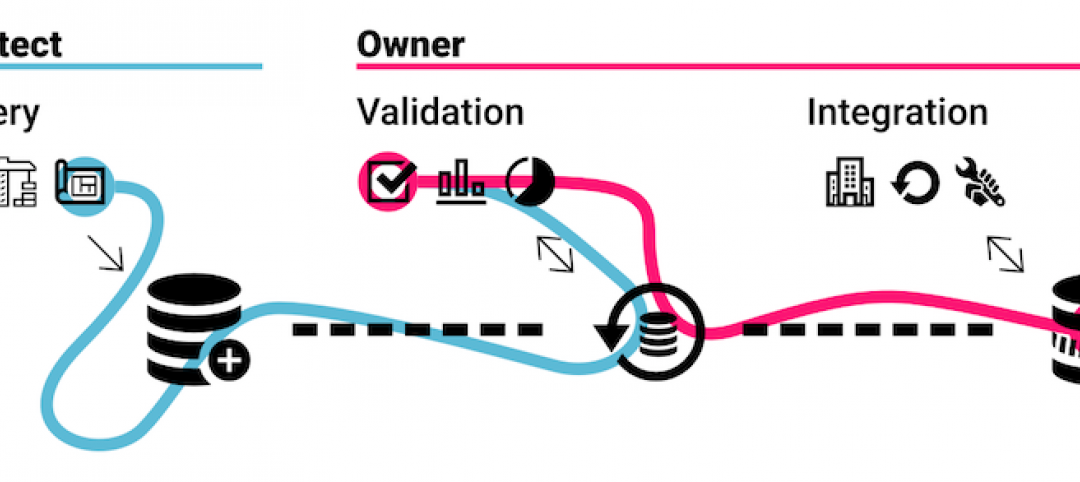Today, construction is seeing heavy investments in digital capabilities. From 2010 to 2017, construction technology companies garnered $10 billion in investment funding. As of July, VC investments have hit $1.05 billion for 2018. In the context of design and construction companies, this is translating into serious investment for creating and executing digital strategies. As consultants, we see construction companies aiming to make significant overhauls to their IT infrastructure, grow their digital teams, and implementation new design tools. For organizations within an industry that has historically put less than 1% of revenues towards research and development, this level of investment is refreshing, and properly executed may set the stage for many transformations.
However, the strategic changes that are taking hold in design and construction businesses are not without their barriers. In our experience, while strategies are always created with the best of intentions for improving business, the effort involved in executing the strategy – especially ones involving disruptive digital capabilities – is greatly underestimated.
In performing countless strategic reviews, I have observed that a successful digital strategy is most often hindered by five dominant habits. The good news is that these are not insurmountable given a healthy and robust attitude to managing change within a company.
Procurement without Implementation
Consider the following scenario: content management for BIM assets has been identified as a pain point among staff members and is adversely affecting productivity within a company. The company decides to make a significant investment in a new content management system. After a year, an IT review reveals low utilization of the tool. After some inquiry, it is found that the staff is largely unaware of the new CMS even though the acquisition of the software was aimed at addressing their problems.
What went wrong?
More often than not, stories like this are the result of neglecting the hidden costs: No matter how feature-rich or intuitive a new system may seem, immediate adoption and usefulness are not guaranteed results of software procurement. Following through with robust communication, training, and coaching are essential to the adoption of new systems. This is especially true of systems that may significantly change workflows.
In a crunch, users and teams will always tend to fall back on old habits and workflows even if new systems are demonstrably superior. Indeed, the real cost of a digital workflow is not in its procurement, but its implementation. This also frequency results from…
Forgetting the Sticks and Carrots
When forming a strategy, it is easy to start listing out what a company should be doing while forgetting how to bring along the stakeholders that will ultimately be tasked with implementing the strategy. In a recent evaluation, I noticed that the company had invested in creating a rather robust BIM Execution Plan that would be used to help teams plan their delivery approach. But the teams I interviewed noted that the plan had been adopted unevenly in their projects. While a few had used it, most teams continued to operate without one. Few knew who was responsible for the plan, and when asked about it a variety of often conflicting answers were given.
This confusion revealed a problem with the adoption of the tool: a lack of accountability. While it may seem obvious, setting the expectations and measures of performance for who is tasked to implement the new workflow is essential. Depending on the leadership style of the company, it is also important to clarify what the outcomes would be for good and poor performance. Teams that demonstrate a level of excellence in their implementation of a valued workflow could be provided some kind of bonus for their efforts, whereas teams that fall short of expectations should expect a level of review from leaders so the process can be improved in the future.
Prioritizing Sexy over Boring
Digital strategies can be very exciting for a company to implement. There will be many interesting tasks for team members to think through, many new technologies to try out, and real opportunities for staff to learn new skills and advance their careers. But in order to have a successful implementation, companies will invariably need to apply several tactics that may be, well… boring. More often than not, stakeholders in a company tend to get seduced by the exciting problems and forget about the less interesting, but equally important, problems of a digital strategy.
For example, a computational designer will be very motivated to create a Python script that addresses a novel design workflow but will be less inclined to help maintain or update an older mission-critical VB script created by a past employee. Both of these activities may be equally important relative to the overall strategic success, but the more interesting problem will get the focus, while the boring problem will get the backburner.
Within a team of digital stakeholders, it is especially important to set out clear priorities and establish why some priorities, no matter how boring, require valuable time and attention – even if that means tabling the latest sexy new capability for the time being.
Perfect Getting in the Way of Good
I was recently invited to participate in a peer-review of a custom built computational design tool for performing a variety of analysis related to sustainable design. The tool appeared quite mature and functional. I asked how many people were trying out this new tool. “None, we don’t feel it is ready yet.”
“Can you define when ‘ready’ is?” I asked.
The team started listing off reasons mostly related to a sense of feature incompleteness. When all was said and done, the reasons were mostly excuses: they were letting an idea of ‘perfect’ get in the way of ‘good enough’. When executing a digital strategy, especially one that may prove to be disruptive to existing workflows, it is easy to get caught up in designing for perfection. This type of focus often leads to a variety of problems.
One problem is that they may be short-changing their present accomplishment. Not distributing it may result in the design team not getting valuable user feedback that would allow them to identify bugs and refine their product roadmap for ongoing improvement. Furthermore, even in a simplified state, they may be keeping what may already be a useful tool out of users’ hands.
Another problem stems from over-specification: frequently adding more and more features to a design tool leads to it becoming less flexible in application. “Feature-creep” can be endless, and counter-intuitively can result in a more fragile tool after much longer development time.
Ultimately, the roll-out of a digital strategy is like any other design problem: it requires iteration through deployment, user feedback, and adjustment. New tool development should focus first on having something that is “good enough” but can be improved upon over time: a tool that helps automate or improve part of a design process is better than having a “perfect” solution that may never sees the light of day. And successfully executed development is important to prevent companies from falling into the age-old trap of…
Stepping Over a Dollar to Save a Dime
Let’s face it, the nature of the project-based construction industry automatically places an emphasis on short-term gains rather than long-term innovation. We can see this bear out in data showing flat productivity and low investments in research and development. Where many digital strategies fall short is an overemphasis on tactics that produce near-term benefit by reinforcing old ways of working because “that is the way we always do things” and “changing things up will slow us down.”
For example, I have observed this come in the form of continuing to support and maintain legacy CAD systems out of a fear that a complete switch over to a modern platform will result in a drop of near-term productivity. The same hesitancy is present when an opportunity for introducing automation is tabled because a project manager is better able to predict the project spend with a manual workflow in place.
Overcoming this habit requires that leaders in a company communicate and emphasize the long-term desired outcomes of a digital strategy. It will also involve tweaking expectations of performance from teams during a transition period as a new workflow is being adopted.
Other considerations
The habits and barriers described here are not comprehensive, but they do represent some of the more common challenges I see facing the successful execution of digital strategies. Sometimes the strategic changes are necessarily slow and incremental. Other times, a strategy may require a more substantial re-calibration of business processes. In either case, the momentum of a strategy can be stalled if the barriers to implementation are not actively addressed. This means actively engaging people to transform a business culture – and this is often a more radical task to manage than the adoption of new digital technology.
More from Author
Proving Ground | Apr 14, 2021
Business intelligence: 5 drivers for adoption in architecture and construction
This article will explore some of the drivers for how BI is finding successful adoption among architects, engineers, contractors, and owners.
Proving Ground | Oct 8, 2020
4 challenges of realizing BIM's value for an owner
In recent years, we have found our consulting practice engaging more and more with owners that are questioning the value of BIM and how they can make use of potentially data-rich BIM assets.
Proving Ground | Mar 24, 2019
5 ways designers and builders can use business intelligence with data they already have
Tricky construction budgets, large project teams, and unique designs needing extensive coordination are all problems increasingly being handled with new software tools and data.
Proving Ground | Dec 12, 2017
Reflecting on the future of work
'I believe in the potential for new technology to positively impact the quality of the built environment with immense speed and great efficiency,' writes Proving Ground's Nathan Miller.
Proving Ground | Oct 6, 2017
How professional bias can sabotage industry transformation
Professional bias can take the form of change-resistant thinking that can keep transformational or innovative ambitions at bay. Tech consultant Nate Miller presents three kinds of bias that often emerge when a professional is confronted with new technology.
Proving Ground | May 24, 2017
Data literacy: Your data-driven advantage starts with your people
All too often, the narrative of what it takes to be ‘data-driven’ focuses on methods for collecting, synthesizing, and visualizing data.
Proving Ground | Feb 16, 2017
Positioning computational designers in your business: 4 things to consider
There appears to be very little industry consensus as to what a ‘computational design’ position actually means in a business setting.
Proving Ground | May 9, 2016
3 things to consider for computation in the business of design
In creating a roadmap for computation, Proving Ground's Nathan Miller likes to consider investing in the right people, incorporating a range of skillsets, and defining the business value.
Proving Ground | Apr 15, 2016
Should architects learn to code?
Even if learning to code does not personally interest you, the growing demand for having these capabilities in an architectural business cannot be overlooked, writes computational design expert Nathan Miller.














